Today we’re going to talk about if the no contact rule will make a fearful avoidant lose feelings for you. My team and I actually got this topic idea from the people in our community.
Constantly our clients are worried that no contact will make their fearful avoidant exes leave them forever.
And since I’ve only recently stumbled across new data on fearful avoidants it’s fitting that we take a look at the effect that no contact will have on them.
I figured the best way to do this is to look at,
- Explaining exactly how to diagnose if your ex is a fearful avoidant
- Looking at the stages a fearful avoidant will go through during a breakup
- Why shorter no contacts are ideal
- Answering if no contact can actually make them lose feelings for you
Let’s start at the beginning.

What Are Your Chances of Getting Your Ex Boyfriend Back?
Take the quizWhat’s The Best Way To Tell If Your Ex Is A Fearful Avoidant?
There are three things that I really want you to pay attention to when it comes to figuring out if your ex is a fearful avoidant.
- The actual percentage of FA’s out there
- The upbringing of an FA
- The core wound of an FA
According to the Attachment Project,
The fearful avoidant attachment style occurs in about 7% of the population and typically develops in the first 18 months of life.
Fearful avoidant exes aren’t usually the norm. So, it’s important not to fall victim to just classifying your ex as a fearful avoidant when in fact they may be dismissive avoidant.
So, what data points then should you look at to give you insight?
Well, their childhood is actually a great place to start.
Once again pulling from the Attachment Project,
Fearful avoidant attachment develops in children when caregivers often exhibit contrasting and unpredictable behavior
The caregivers might show contrasting behavior towards how they parent their child. For example, they might be highly loving at times, but on other occasions, they might not even meet the child’s basic needs. As a result, this creates a sense of fear within a child for their own safety.
It’s that basic needs bit to pay attention to.
But really the most obvious sign you are dealing with a fearful avoidant revolves around core wounds.
I’ve stated numerous times that every insecure attachment has a core wound.
- Anxious = A fear of abandonment
- Avoidant = A deep need to be independent
It just so happens that fearful avoidants have the special case of containing two core wounds.
Both anxious and avoidant ones.
This is often why you get these crazy mood swings with avoidants and why sometimes they are mischaracterized as having multiple personality disorder. It’s because they literally can seem like they have two personalities.
To prove this I’d like to play a fun game.
I’d like to take you through how an avoidant will typically handle a breakup.
The Stages A Fearful Avoidant Goes Through During A Breakup
I thought I’d have some fun with this one so I spent 30 minutes creating a very rudimentary graphic,

What Are Your Chances of Getting Your Ex Boyfriend Back?
Take the quizThis is how a fearful avoidant will typically handle a breakup.
Like my famous avoidant death wheel this cycle has eight stages.
- Avoidant side triggering
- Suppression through distraction
- Going to extremes
- Rarely rebound
- Anxious trigger
- Passive aggressive reach out
- Actual reach out
- Anxious nurturing
And then back to the top of the cycle again.
So, let’s briefly walk through each of these stages.
The Avoidant Side Triggers
Upon the outset of a breakup a fearful avoidants core wound of independence will most likely trigger. Remember, sometimes an anxious side can trigger first but generally speaking we’ve found the avoidant side is the one that triggers, especially if they were the ones to initiate a breakup.
Suppression Through Distraction
The first thing they do is attempt to suppress their emotions by distracting themselves.
- Going out all the time
- Drinking a lot
- Binging Netflix
You get the idea.
Going to Extremes
There’s almost an overcorrection at play here. Those distractions, they go to literal extremes.
Maybe your ex would work out once a week when you were together.
Now, they are working out two times a day.
Doing stuff they never did before.
The Rare Rebound
Sometimes these extreme distractions carry over in the form of another person.
They go on the rebound to suppress their emotions.
This tends to be on the rarer side though.
The Anxious Side Gets Triggered
But this isn’t a light switch that as simple as flicking it on and off. When their anxious side gets triggered it’s actually kind of light. They’ll start reminiscing. Those emotions they suppress will slowly begin to bubble to the surface.
The Passive Aggressive Reach Out Stage
Rather than reaching out to you directly they’ll usually post something like this to social media,

What Are Your Chances of Getting Your Ex Boyfriend Back?
Take the quizSomething that’s a direct “dig” at you but not too in your face.
The Actual Reach Out Stage
Here’s where they break down and reach out to you.
Their anxious side has taken full control.
The Seeking Of Nurturing Stage
And this stage is really going to be the crux of my argument for explaining how no contact and fearful avoidants interact. What typically happens when the anxious side takes control is that they seek validation.
They seek nurturing.
If you are doing a no contact rule and don’t give them that nurturing guess what happens?
They withdraw back into themselves and start the entire cycle over again often going to even greater extremes.
Why We Believe Shorter No Contacts Are Ideal For Fearful Avoidants
It’s ok for a fearful avoidant to go through this cycle one time,
We want them to.
We need them to recognize your value.
However, if they go through this cycle a second time,
Heck, even a third time,
It becomes dangerous.
The fearful avoidant will withdraw so far into themselves a recovery of your relationship becomes very difficult.
This is why we actually prefer shorter periods of no contact, no more than 21 days if you are trying to get a fearful avoidant back.

What Are Your Chances of Getting Your Ex Boyfriend Back?
Take the quizBut I guess I still haven’t answered the question that prompted me to write this article.
Will No Contact Make A Fearful Avoidant Lose Feelings?
Honestly, it’s a tricky thing to answer.
I think that the more a fearful avoidant is allowed to go through the cycle pictured above the more likely they are to move on. As a general rule of thumb you want a fearful avoidant to go through the cycle one time but if they are allowed to go through it more than three times… well, that’s where things become difficult.
So, yes, you have to be careful with no contact and fearful avoidants.
But this is why we’ve started recommending shorter no contacts. In fact, a fun little story. Just last month is when I started doing this to coaching clients and the very first person I recommended it to got his ex back… IN SEVEN DAYS!
Now, his situation was unique and not at all what I’d use as a comparison but here’s the point.
Shorter no contacts with fearful avoidants is the way to go.
But one must be careful when diagnosing their ex. More often than not they aren’t fearful avoidant, but dismissive.
I’ll leave you with one final note. It’s been my experience that fearful avoidants aren’t particularly difficult to get back but they are incredibly difficult to keep in a relationship.
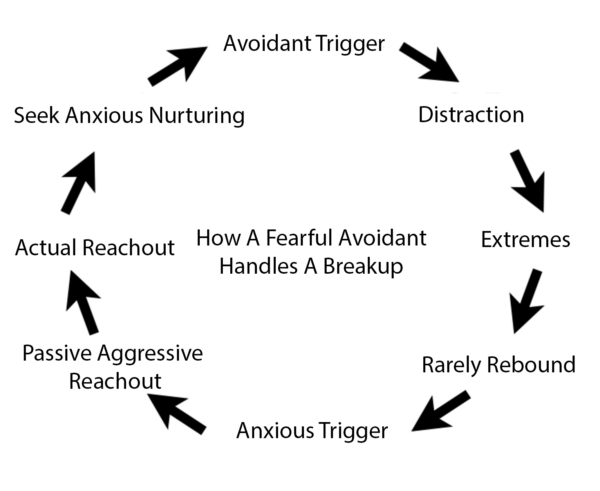
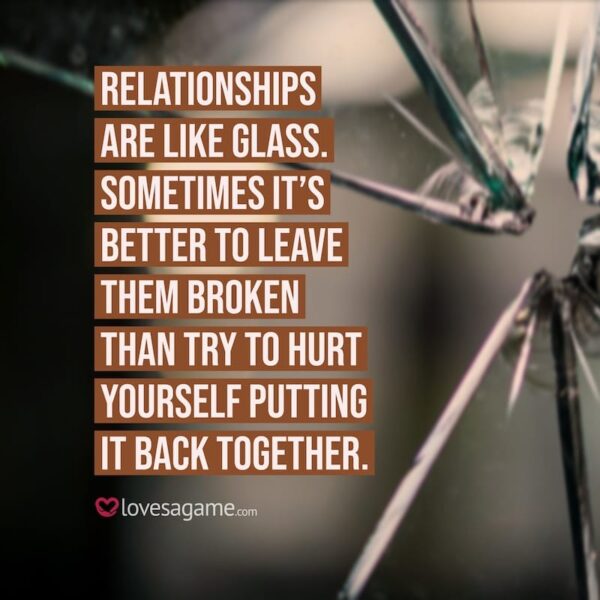
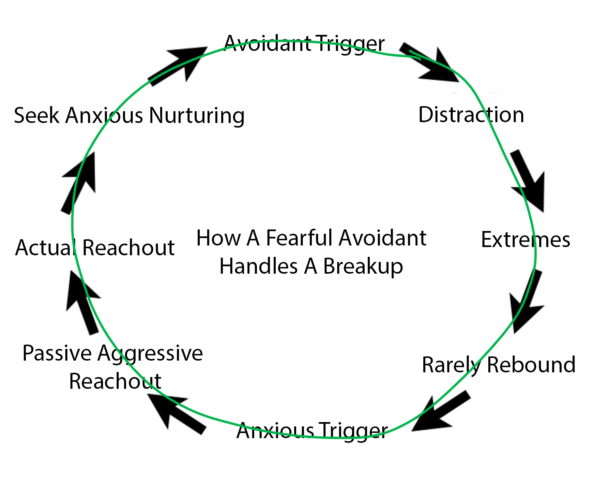
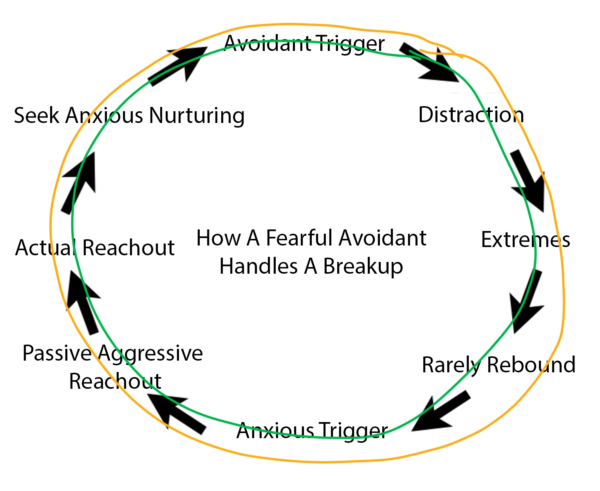
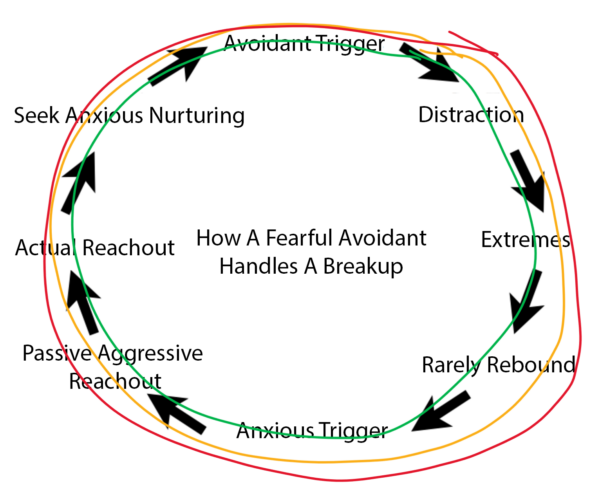
El
March 18, 2025 at 12:47 am
As a recovering FA, and very far along in my recovery, it takes a hell of a lot to get here, I can recognise the feelings as they come and where they’re really from now, I reach out to people who care about me, no longer withdrawing
But i can say, as someone who drove away good friends, I still thought about them at times, I just felt too much guilt, felt it was impossible to fix things, damage is done
After a year one reached out to me and I was guarded, avoidant, I talked, but it ended again, I think about it now and know i just pushed the feelings down, but didn’t lose them, I still wanted those connections, i still cared
Once i recovered and understood myself more i then reached out to apologise myself, fully acknowledged my wrong, explained the reason but that it doesn’t excuse the hurt i caused, and i didnt expect forgiveness, or even a reply, I just wanted to provide them with closure, to not leave them hurt
But we ended up reconnecting and have stayed connected, we talk completely openly, I’ve said before stuff like ‘I saw your message a while ago, but realised I was avoiding because of *this* feeling’ or what they said ‘makes me anxious, but I know the feeling is from my past, that its fears other people caused, and i know you wont hurt me like this’ then we continue on to talk about it, sharing experiences. Every interaction I’ve had like this, with people who understand has healed me a little more each time, but i think it takes the FA being aware of themselves before this works
I am, even now, still coming to terms with being forgiven, its hard to truly believe its real-like mild shock, but it no longer feels impossible
Recovering from this took processing over a decade of trauma, gaining closure in different forms, working on fears, learning to identify triggers and behaviours as they happen, accepting myself, my mistakes, any hurt i caused, fighting the doubts and negative thoughts, allowing people to care about me, getting through the pain and the grieving, and so much more. it was hard, sometimes you break more in the recovery process, but you gotta get through it to then heal
Poppy
March 6, 2025 at 11:32 am
Ugh
I had such an intense 3-month relationship with an fa. He disappeared once and I approached him and we rekindled. He admitted closeness makes him flee. I said I needed some kind of movement on his part if I just try again. He booked a cruise and we had a blissful 3 weeks. Then it happened again.
Intellectually I know that I should just let him go. I am doing no contact after some anxious texts. He hasn’t responded and I guess has ghosted me again. We were in the honeymoon phase, and I know he cared about me. It must be too early to worry? Should I just forget about it and move on? I know I should but I can’t. I want to try no contact but I I feel stupid because obviously no one else would stay with someone who ghosted them twice?
My anxious attachment came out during this relationship. Not excessively. We didn’t have any outright conflicts or any issues that I know of. I am proud that I process my emotion and was able to show up calmly, even though I did send some anxious texts at the end. I didn’t say anything. I regret.
Should I just try to Bear it and never contact him again? I’m so broken-hearted
Adrienne
June 12, 2024 at 11:36 am
This is helpful.
My FA ‘ex’ was actually a short 1-2 month ‘relationship’. I learned recently that this is his attachment style (despite it being the rarer one, it is quite clear from the research I’ve read). I am starting to wonder if I was a rebound…. but our connection was very intense, open, and we were extremely respectful of each other, and it was obvious we were head over heels on both sides… despite the obvious limerence factor. In hindsight, emotions moved way too fast within a month. Then bam… something situational happened and he got extremely hurt, so did I. Inadvertently though, it was from my side. It had to end temporarily (apologies for crypticism…). He immediately withdrew completely, wouldn’t contact me, and on the following day I called him, and he said he needed space, he couldn’t do this. Unfortunately I knew nothing about how to handle the need for space, or about attachment styles. I just wish I had handled it differently. My anxious side went into complete overdrive. For 5 days I tried desperately to “fix” things and keep contact (begging)… then eventually forced myself to do no contact. He then got in touch after a few days of that, calling me three days in a row. But….. and this is the most awful part… I messed it up big time. Yes I am kicking myself. I was anxious all over again…. and again, ‘begged’ and ‘pleaded’ with unpredictable emotions on and off for several days 🙁 I just couldn’t take it slow. This was a week ago. And so, this time last week, he just told me, please stop contacting me, it’s best we don’t talk at all right now, and also that it’s final, it’s over. I said ok, I will respect his wishes, that it’s totally fine (obviously not fine but my head was in a haze and I was barely able to compose a message, so may have come across cold). Strangely after that, he unblocked me on w’app (but no contact). So I have let him be…. and have been in no contact for a week now. I have no idea if it really is final or not, but perhaps it is. It is my own fault and I really regret the behaviour from my side. It really is utter torture… can’t turn back the clock! But proceeding on with life, improving myself and working on projects. Will stay focused on other things and maybe rethink things in a few weeks.